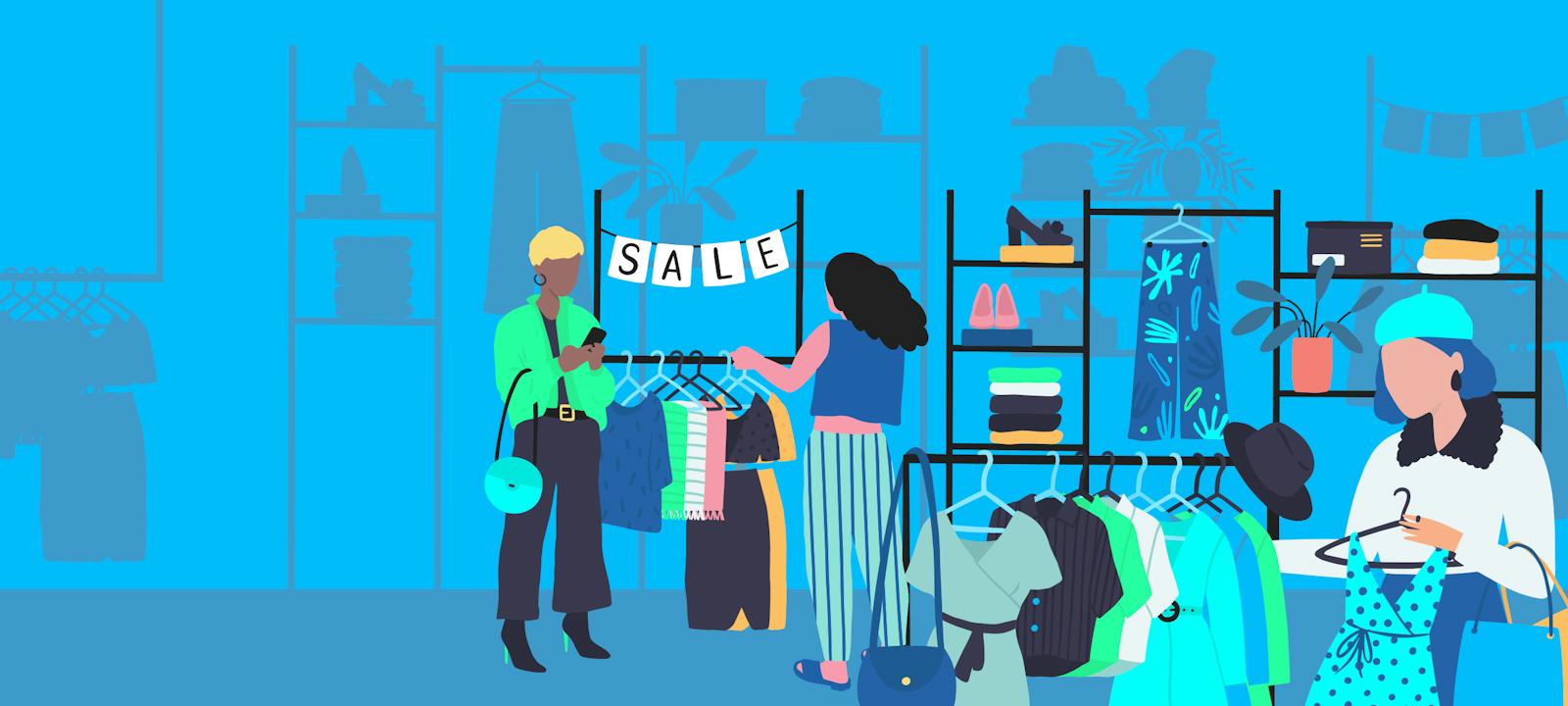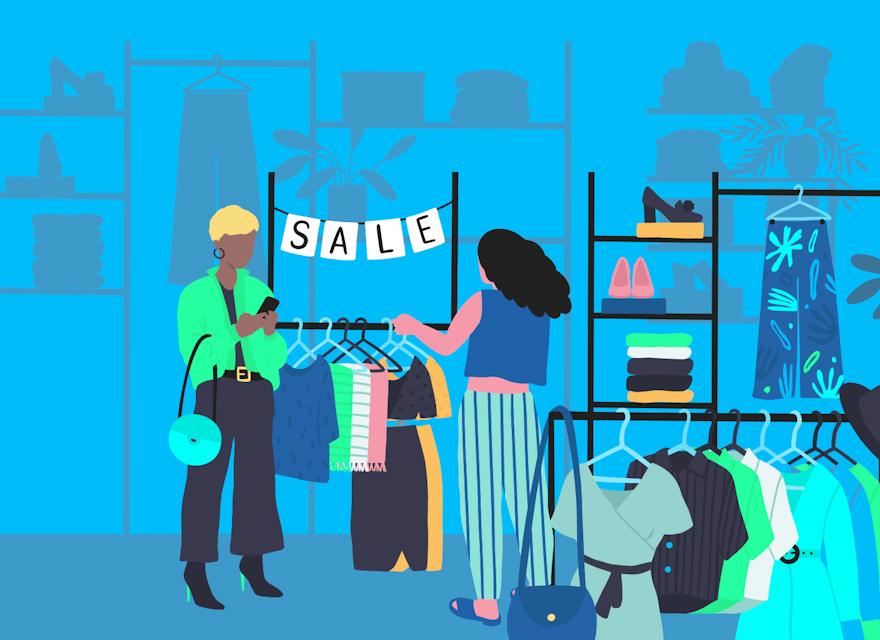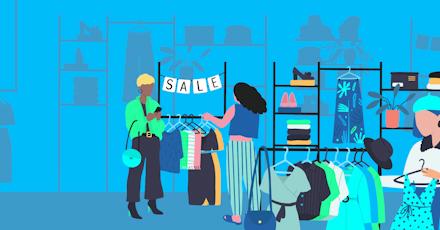Secondhand markets
Shopping in the secondhand market is a clear win-win. It's good for your wallet and the environment. Despite the obvious benefits, many people consistently buy new clothes.
Several of the consumers we met told us they had bad experiences with secondhand shopping. They complained that the setting felt messy and uninspiring. One of them thought the word “used” didn’t sound appealing.
It’s energy-intensive to find what I’m looking for
“Shopping secondhand requires more energy. Both in terms of looking and seeing the value.”
Sometimes you manage to find great bargains when shopping secondhand. There are many advantages to buying items on the secondhand market, but it also requires an investment of time. The stores are overflowing with merchandise. Shoppers have to comb through the store to find the items they want.
No returns
What many consumers don’t know is that you actually can return purchases made at the vast majority of secondhand stores. “I hate that I can’t return used clothes,” said one consumer we met. A common assumption – but not always true.
Secondhand stores are uninspiring
As we mentioned in our blog post about in-store experiences, brands need to think about the customer's total experience. This means that both the website and the retail environment itself are very important. We have been spoiled by styled shops and tastefully done display windows. In secondhand stores, the décor is not always the highest priority. “I feel really unmotivated when I walk into Stadsmissionen” is how one consumer put it to us.
Annoying to drop off clothes
Doesn’t it feel good to get rid of old clothes? However, dropping the clothes off is often a step that gets skipped. “They usually hang in my closet until I throw them away… unfortunately,” said one consumer we talked to who lived in the countryside and had a long way to travel to the nearest clothing collection point.
The planet needs our consumption to become more sustainable. That’s why companies also need to take more responsibility. Filippa K and Houdini are two brands at the forefront of sustainable fashion, thanks to their exploration of climate-smart business models. A brand controlling the distribution of its products on the secondhand market or offering product rental is not only profitable – it also builds a relationship with the consumer.
Whatever role you play, there is a serious cleanup underway in the distribution of secondhand items. The distinction between newly-produced and secondhand is beginning to blur, which in turn contributes to a circular economy.
About the Future of Retail Series
For a four-week process, we met with consumers and retail staff, both in a deep interview format and informally out on the town, to try to survey which shopping experience needs are currently not being met. With the help of these insights, we have been able to focus on some specific areas. After that, we performed a comprehensive trend monitoring and business intelligence to better understand this highly innovative retail landscape. The study aimed to identify new opportunities for our customers to create the shopping experiences of the future.
Don't miss out on Future of Retail part 1, 2, 3 and 4, 6 and 7













